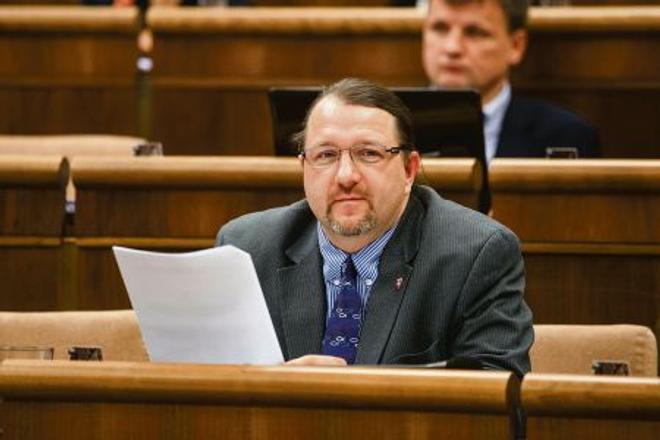A CRUSADE against nudity and obscenity in the media has been on the agenda of the Slovak Parliament recently thanks to Branislav Škripek, an MP with the opposition Ordinary People and Independent Personalities (OĽaNO), who not only prepared a revision to the Children and Youth Morality Protection Act, but also initiated a petition for what he called protection of the morality of children. Škripek wants to stop nude pictures from being published in newspapers and magazines that are not identified as pornographic and parliament, with the support of deputies from the ruling Smer party, advanced the draft amendment to its second reading on November 7. Yet the Slovak branch of the International Press Institute (IPI), a media freedom watchdog, believes Škripek’s crusade smacks of censorship.
Škripek, who claims to have collected 11,000 signatures with his petition, insists that media outlets containing nudity should be labelled ‘erotic’. The amendment should also prohibit the sale and distribution of print and other media which might threaten the morality of youth aged under 18. Furthermore, his amendment aspires to regulate the sale of such content in shops, the SITA newswire reported.
“In the same way that we can accept that it is wrong to sell alcohol to minors, I also want to initiate a discussion so that we respect that we should not make it possible for people under 18 to access humiliating views of the human body and intimacy,” Škripek told SITA.
Škripek’s efforts have provoked both criticism and support. Smer MP and head of the parliamentary committee for culture and media Dušan Jarjabek said that the media are not ‘holy cows’ and pointed to erotic advertising which, according to him, must be regulated.
On the other hand, Pavol Múdry, the deputy chair of IPI’s Executive Board, characterised Škripek’s actions as the beginning of censorship and limiting the media’s freedom of speech, according to SITA.
“Škripek is opening a Pandora’s box with efforts to limit freedom of speech and expression as a basic human right guaranteed by the Constitution of the Slovak Republic,” said Múdry, as quoted by SITA. “Furthermore, he may come up with a proposal to not publish pictures of parliamentarians in compromising poses, for example sleeping or relaxing [while at work].”
Múdry also suggested that if adopted, the draft would bring changes not only to the Press Act, but other laws, including the constitution.
He asked if Škripek wants to also prevent children from entering galleries or museums with exhibitions of naked human bodies, adding that he believes Škripek is just trying to get publicity, SITA reported.
Even Škripek’s supporters have criticised him for problematic language in his amendment, which uses ambiguous terms like “erotic” and “morality”. Thus, after a discussion on November 27, the committee for culture and media did not recommend that parliament adopt the amendment. Even though Smer voted for the amendment in the first reading, Jarjabek did not support it in the committee, suggesting that the changes are not possible to carry out, according to SITA.
What is moral and what is not has not been specified, Jarjabek said, as quoted by SITA, adding that “we do not know what is erotic and what is not erotic; this is extremely subjective”.
The Christian Democratic Movement (KDH) wants to keep the debate alive, according to KDH committee member Pavol Abrhan, and thus the KDH did not vote against the draft in the parliamentary committee, SITA reported.
Freedom and Solidarity (SaS) MP Martin Chren claimed that the real threat in the amendment could be explained by the behaviour of Smer MPs, SITA wrote. He pointed out that all but one of them voted for the amendment in the first reading. This, he said, was intended to scare the media.
“One of Smer’s MPs tried to persuade us to vote for the amendment positively, in order to at least scare the media, so that they will be obedient,” Chren said, as quoted by the TASR newswire.
By contrast, Jarjabek said that Smer forwarded the amendment to a second reading because it pertains to sexual violence and erotic advertising.
“Erotic advertising appears in the media where we would not expect it,” said Jarjabek, as quoted by SITA, explaining that media which are not classified as pornography are not obliged to inform people that they contain erotic content.
He stressed that erotic advertising should be distinguished from pornography, which is restricted. He also believes that media outlets that carry erotic advertising should bear a special mark to inform people of its adult content.
“Everything is permitted but I want to know in what circumstances [sexual content will appear] and in which magazine, as well as how it will be labelled,” Jarjabek said, as quoted by SITA, adding that “so I won’t buy a magazine about flowers only to find advertisements for oral sex”.



 Branislav Škripek (source: SITA)
Branislav Škripek (source: SITA)